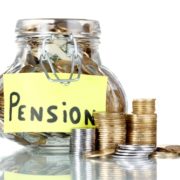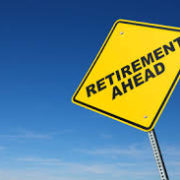When I speak with people who have either retired, or are planning to retire in the near future, there are some similar themes that emerge when it comes to the financial side of things.
There appears to be five key questions that regularly come up in the conversation.
Will we have enough money to enjoy our retirement?
Many people have an idea about what they would like their retirement to look like – where they would like to live, how they will spend their days, the type of car they would like to drive, and the places they would like to visit.
However not many people have considered just how much their ideal lifestyle will cost.
Sure, the government will pay the age pension, however that does not allow you to have a particularly ‘flamboyant’ lifestyle.
The maximum age pension for a single person is just $22,804 p.a., and for a couple it is $34,382 combined. To put this into context, the poverty line for a single person in Australia is $426 per week (pw), or $22,152 a year.
The latest figures in the Retirement Standard published by the Association of Superannuation Funds of Australia show that a modest retirement lifestyle costs a single person $23,767 per annum (pa), while the cost for a couple is $34,216. By contrast, a single person wishing to enjoy a comfortable retirement lifestyle will spend just on $43,000 – when a couple will be shelling out close to $60,000.
Will I ever be able to retire?
For those wishing to maintain more than a basic retirement lifestyle, some form of continued participation in the workforce after ‘normal’ retirement age is a decision some will be willing to consider in order to fulfil their retirement dreams.
However, undertaking work that generates an income in retirement doesn’t necessarily mean working the 9-to-5 grind from Monday to Friday. Work may be part-time, casual or seasonal. For some it may even mean self-employment – taking a hobby or a skill and turning it into a small business.
Retirement becomes a trade-off. If we have dreams of a certain lifestyle but don’t have the means to support it, it will either be a case of trading down our lifestyle – nobody wants to do that – or find a way to afford it.
In addition to providing a source of income – ongoing workplace participation provides a social outlet (and also helps to keep individuals mentally in check!).
What about the increasing costs of health care as we age?
It is a fact that as we age; we become more reliant on the health care system, and that all costs money.
For those who are eligible for a part or full age pension (approximately 2.5 million Australians) the Pensioner Concession Card provides access to a range of services including bulk-billed doctor’s visits, access to hearing services, reduced cost of pharmaceutical items, and a range of other concessions.
Even if you don’t qualify to receive an age pension, self-funded retirees of age pension age may be eligible to receive a Commonwealth Seniors Health Card which can also provide concessions for health care and pharmaceutical items.
We need to understand what benefits we are entitled to. Sadly, many Australians are missing out on accessing benefits and services that are freely available simply because they are unaware of their entitlements.
What if I run out of money?
This is a very real concern for many people as we don’t know just how long we are going to live, and that makes planning very difficult.
With life expectancy in Australia steadily increasing, retirement is likely to span 25 to 30 years for many. With the money we do have it must last a very long time.
Recent research has found that many Australians are actually under spending in retirement so as to ensure the money lasts.
Managing the retirement budget requires some careful planning. Some very good advice is available to assist in that process.
Even if you were to run out of money, the age pension is there to provide a safety net. Most Australians will be entitled to receive the age pension at some point during their retirement.
The government rightly expects people to use their own financial resources first, before drawing on the public purse. As a result, and as a consequence of an ageing population, we can expect to see government policy being tightened more to restrict the age pension, and other government welfare payments to those truly in need.
And that might include raising the age of entitlement at which we can begin receiving the age pension.
Will I be able to leave a legacy?
Being able to leave a legacy to children and grandchildren is something that many people earnestly aspire to. But, at what cost?
There are many stories of people living in poverty simply so they preserve their modest savings to pass on to the next generation who, are often living a far more luxurious lifestyle than their parents ever imagined.
While being able to leave something for the next generation is a noble ideal, I am sure that a significantly large proportion of potential beneficiaries would prefer to see their parents enjoy their retirement years.
Leaving a legacy would be wonderful ideal, but would your kids want you living on baked beans for the rest of your life? There has to be some balance.
Enjoying a comfortable lifestyle, and being able to afford it, is a very fine balancing act.
There is no simple answer, but perhaps the lesson is to start planning as early as possible, understand what entitlements are available, and seek the appropriate advice.
Source: Peter Kelly – Centrepoint Alliance





